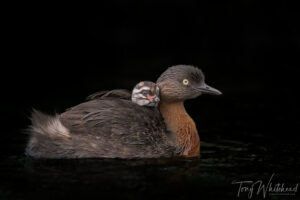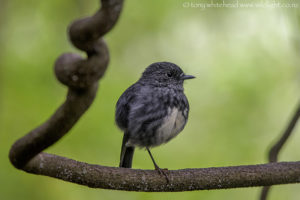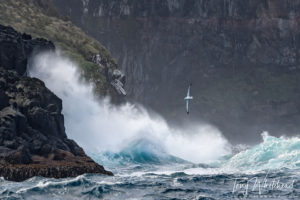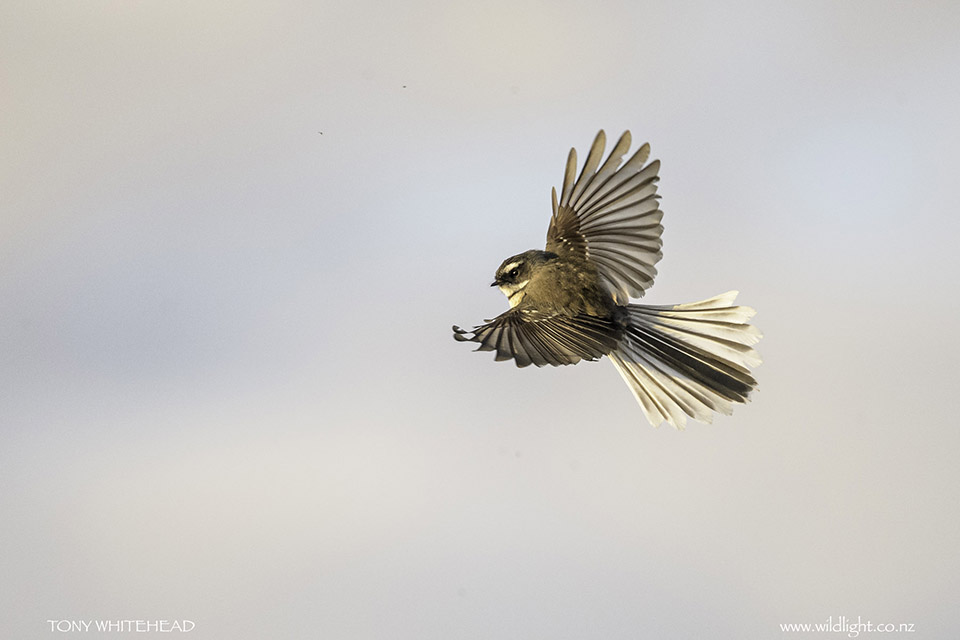
Having recently returned from a few weeks in the oppressive heat of a European summer it has been a delight to wander the margins of Lake Okareka breathing fresh cool air and photographing a feast of Fantails. Some still days have seen ideal conditions for hatches of tiny insects that have attracted clouds of Fantails hawking them in midair. I have never seen so many together at one time with 20-30 Fantails in a flitting feeding frenzy over the flax and Manuka.
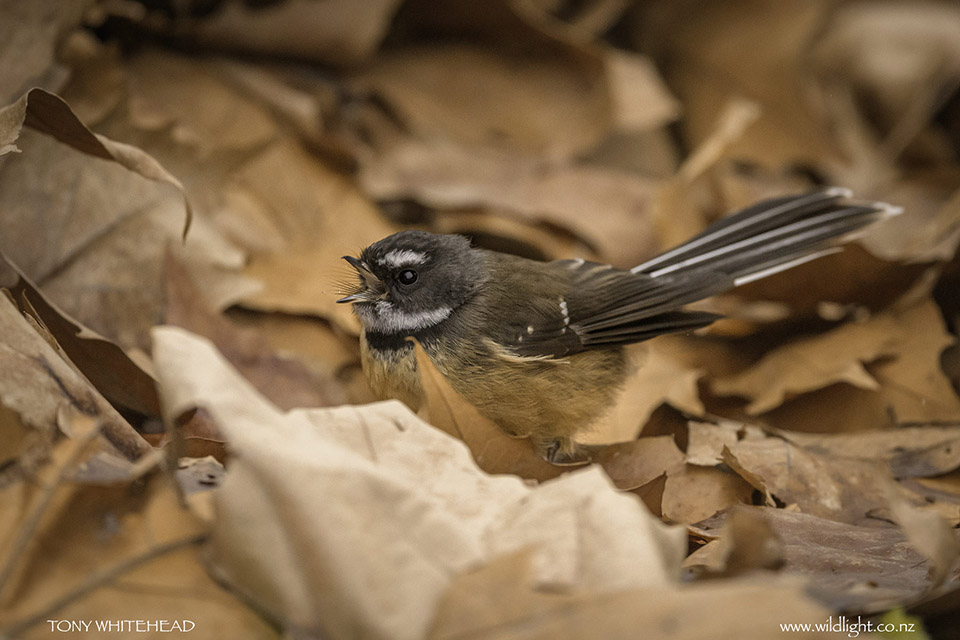
Some species are difficult to photograph because they are difficult to locate and some are difficult because they are so mobile. Fantails are at the hyperactive end of the spectrum and just don’t sit still. A decent perched image with a clean background, nice pose and sharp focus on the eye can be challenging to achieve because they are so twitchy and following their erratic movements with a long lens is difficult.
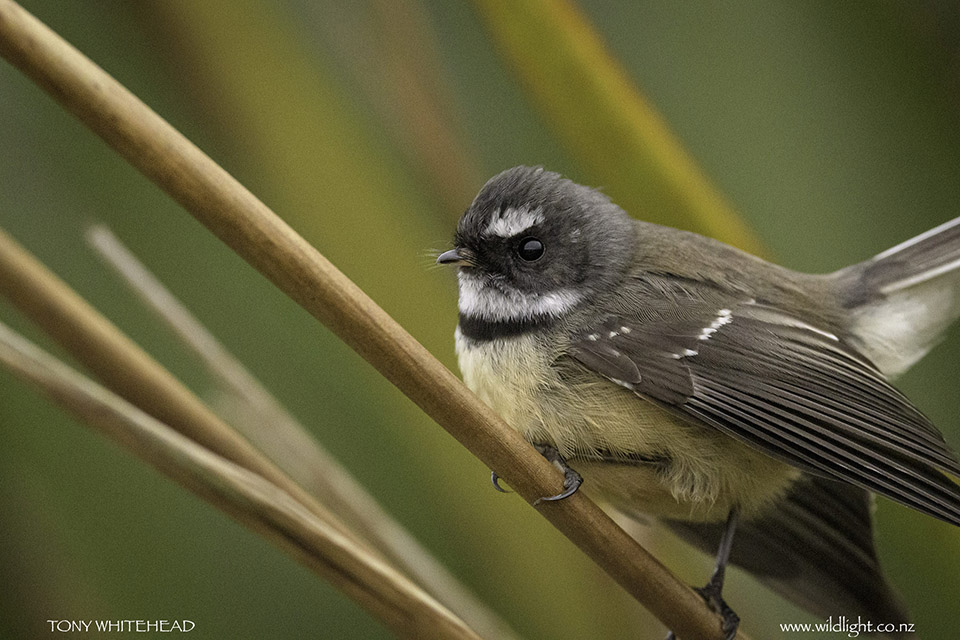
The next challenge is to catch one in flight. Their quick erratic movements are hard to follow and are an overload on even the most advanced camera autofocus systems. To have a fighting chance they need to be against a clean background of sky and I find the Group AF setting on my Nikon the best option. This utilises a group of sensors as one large sensor that then focuses on the nearest subject. For more detail on my Nikon AF settings see this post.
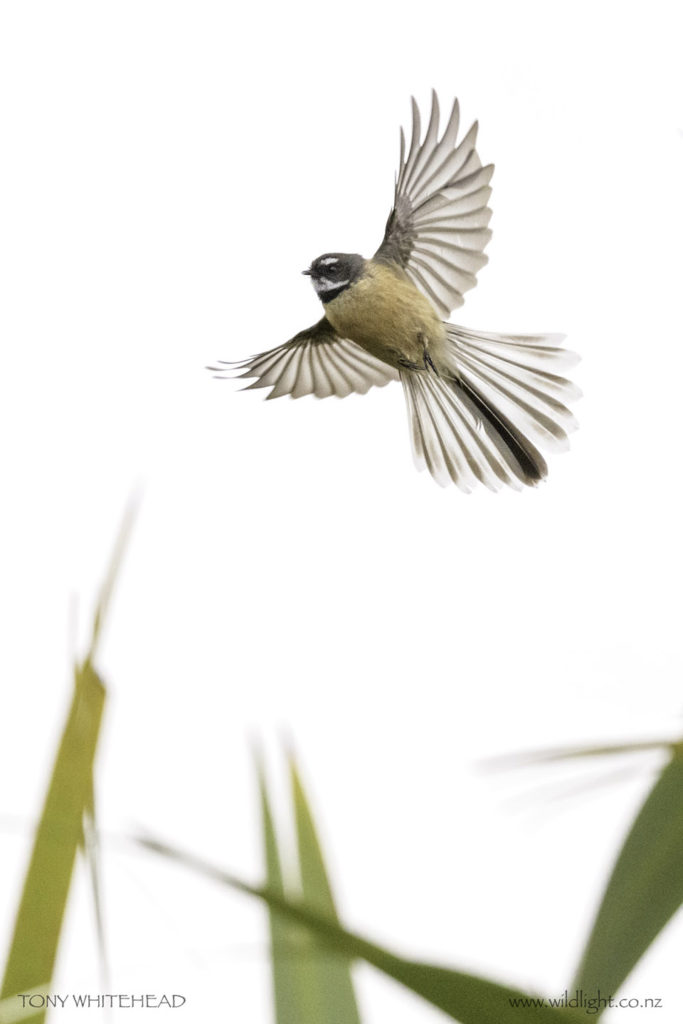
Finding a clean sky background with fantails hawking around bush can be difficult. Getting as low as possible can help but if it is not possible getting as distant a background as possible is the next best option. Prefocus on a static subject (foliage) at the approximate distance that the Fantail is and then try to get the focus sensor over the moving fantail. As with slow shutter work and photo-impressionism this is a low yield pastime with an initial review of images resulting in almost all being thrown away due to technical or compositional fatal flaws. With a bit of luck there will be a speck of gold in the pan as a reminder of the Feast of Fantails.
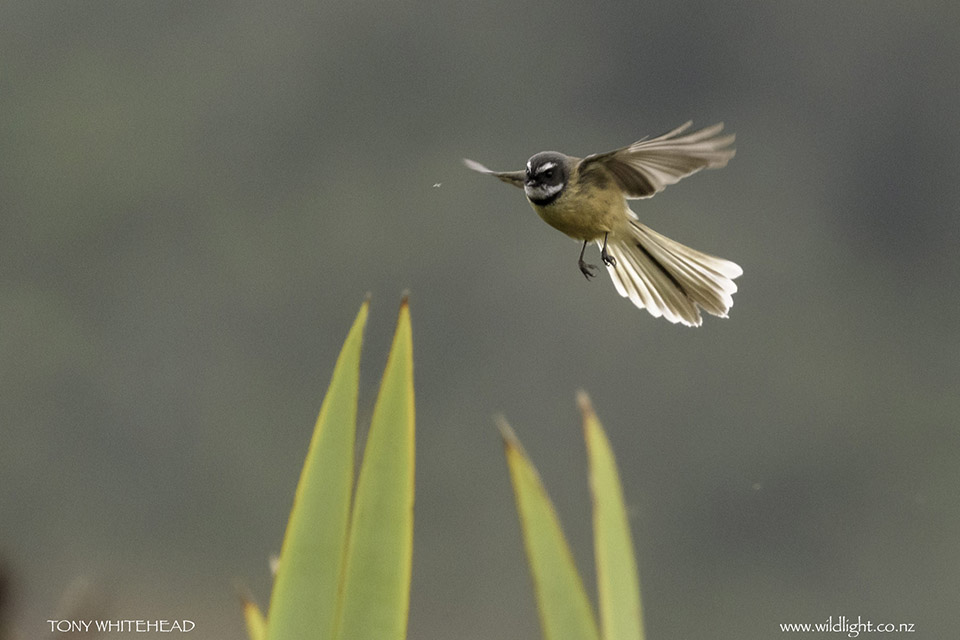
Photos with Nikon D500 and Nikon 500mm f5.6PF or Nikon 300mm f4PF lens.
